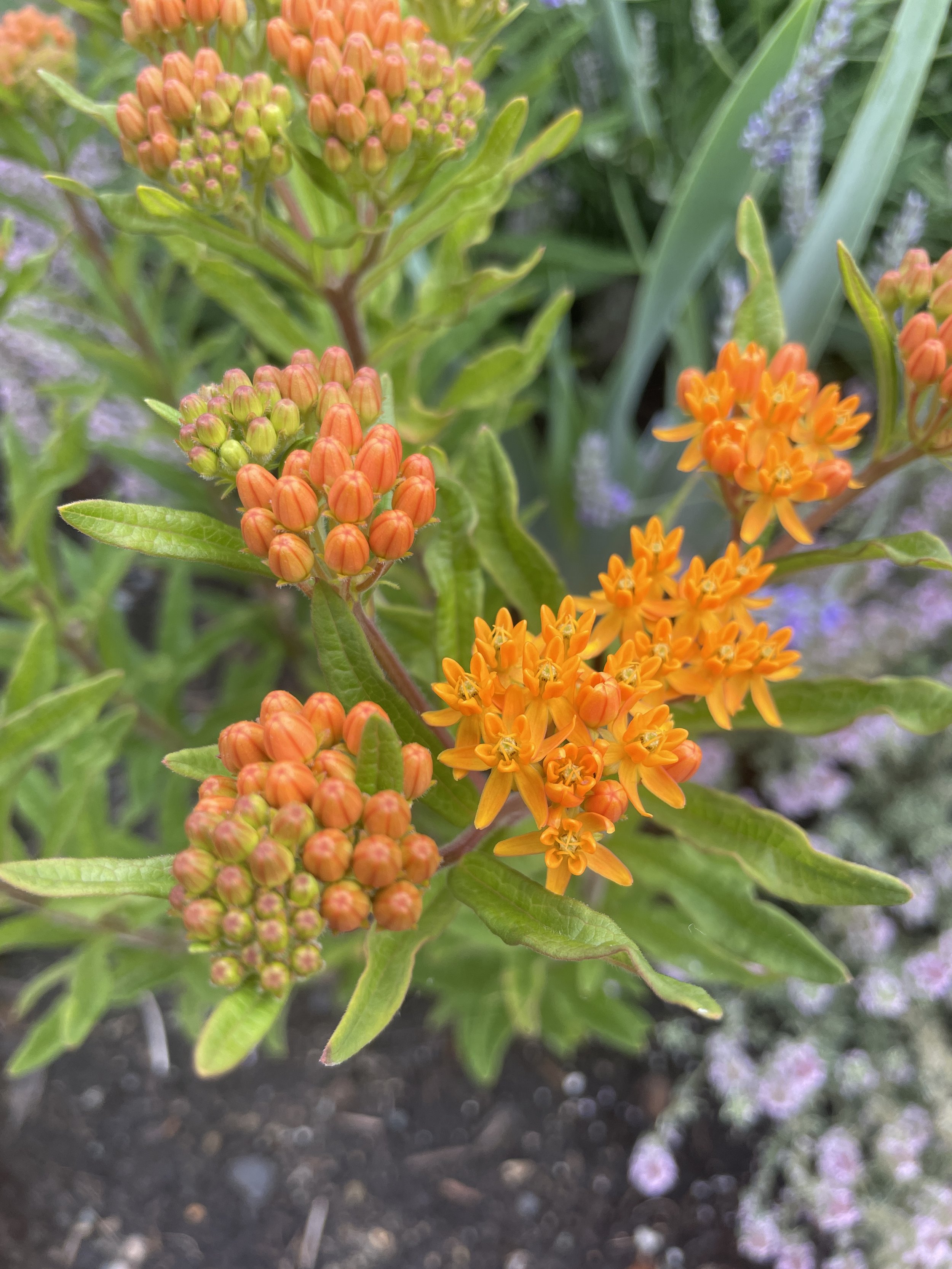Plant Profile: Asclepias tuberosa
Asclepias tuberosa, commonly known as Butterfly Weed, holds a special place in our hearts and designs. This vibrant perennial is not only an eye-catcher but also a vital part of our gardens.
Why Asclepias Tuberosa is Great for Pacific Northwest Gardens
With its brilliant orange flowers and resilient nature, Asclepias tuberosa thrives in our region's unique climate. It's a drought-tolerant plant, requiring minimal care once established, making it a favorite for local gardeners. The plant's hardy nature allows it to endure the cooler, wetter winters, while its love for full sun aligns perfectly with our glorious summer months.
A Feast for Pollinators
Butterfly Weed doesn't just offer visual appeal; it's a magnet for pollinators. As its name suggests, butterflies, particularly the Monarch butterfly, are drawn to its nectar. The plant's specialized leaves also provide a crucial food source for Monarch caterpillars. Bees and hummingbirds are frequent visitors as well, creating a lively and ecologically sound garden.
Native Habitat and the Importance of Assisted Migration
Asclepias tuberosa is originally native to the Eastern and Southern United States. It thrives in well-drained soils, often found in prairies, meadows, and open fields. Its adaptability has allowed it to be introduced to new regions, such as the Pacific Northwest.
With the warming climate, many plants, including Asclepias tuberosa, are facing challenges in their native habitats. Unpredictable weather patterns, shifting growing zones, and increased competition from invasive species can threaten their survival.
This is where assisted migration comes into play. Assisted migration is a conservation strategy where plants are intentionally moved to new areas where they may thrive better in the changing climate. We loving call these plants “future natives.” In the case of Butterfly Weed, introducing it to Pacific Northwest gardens is not just an aesthetic choice but a practical one in supporting its continued growth and proliferation.
We recognize the importance of this thoughtful approach to gardening. By carefully selecting plants like Asclepias tuberosa that can adapt and flourish in our local climate, we are engaging in a form of assisted migration. This not only enriches our gardens but contributes to the broader goal of sustaining plant biodiversity in the face of changing climate patterns.
Understanding the native habitat of the plants we use and the larger environmental context helps us create gardens that are not only beautiful but responsible and forward-thinking. It's a practice we're proud to embrace and encourage others to consider as well.
It's a joy to work with plants that add so much value to both the aesthetic and ecological aspects of our gardens. Asclepias tuberosa is one of those plants that truly resonates with our ethos here at Livingroom Landscape. From the eye-catching appearance to the essential role it plays in the local ecosystem, it's a plant we'll continue to cherish and promote in our designs.
Asclepias tuberosa

